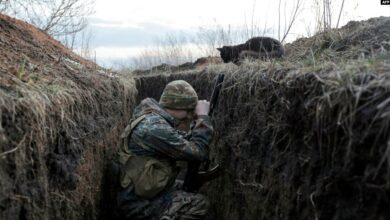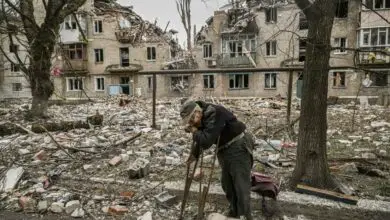
“It’s not a bad idea,” mused Venezuela’s President Nicolas Maduro several weeks ago, on the prospect of purchasing Iranian missiles. Maduro made headlines by conjuring up the image of Iranian ballistic missiles in the Western Hemisphere.
While Iranian military aid to Venezuela remains speculative, Tehran is overtly supporting the embattled Maduro regime. In mid-August, Iran shipped several oil tankers to heavily sanctioned Venezuela to mitigate its fuel shortages.
The Islamic Republic’s bilateral relationship with Venezuela spans decades, however. Maduro’s predecessor, Hugo Chavez, concluded an estimated 300 agreements with the Mohammad Khatami and Mahmoud Ahmadinejad administrations. Predominately economic, this relationship resulted in $15 billion worth of Iranian investment and loans in Venezuela by 2012.
These initiatives would ultimately serve a more cosmetic function rather than a substantive one. As various Iran-funded factories crumbled into disarray, Chavez loudly touted his ties with the Islamic Republic to burnish his anti-imperialist credentials.
Axis of Resistance in Latin America
As for the upshot to Iran, the Center for Strategic and International Studies alleges that Venezuela “became a beachhead for diplomatic and commercial expansion into Latin America.”
But for Iran, like Venezuela, the relationship also serves a propagandist purpose. In his recent work on the history of psychological operations, US Army Psychological Operations Major Ashley Holzmann relies on the 1950 definition of propaganda, a “planned and organized effort to spread information and ideas through political or social entities.”
This argument, too, adopts this use of the term. The following discussion argues that Iran’s relationship with Venezuela, like its measures in the region broadly, serves to reinforce its purported axis of resistance in Latin America, while expanding its foothold in the information environment.
The Middle East in last week has shown how Iran is pushing its own "maximum pressure" against the US and allies; Iran and its "axis of resistance" are active in many places on diplomatic and militant levels; from Afghanistan to Gaza, Houthis to Hezbollah; China, Russia, Turkey pic.twitter.com/t0yTPfLZKy
— Seth Frantzman (@sfrantzman) July 1, 2020
Indeed, in developing and flaunting its relationship with Venezuela’s populist regimes, Iran has been cultivating an image as a formidable challenger to the United States. Iran’s self-concept as the vanguard of an axis of resistance drives its foreign policy in the Middle East. Here, the axis comprises Iran, Iraq, and Syria, as well as political parties and non-state actors such as Hezbollah, Hamas, and the Houthis.
By extending a hand to Venezuela, Iran is attempting to replicate this axis of resistance in the Western Hemisphere.
Iran’s Strategic Alliances in Latin America
Unlike its Middle East equivalent, Latin America’s axis of resistance does not involve military power to challenge Iran’s adversaries. Tehran’s calculation for using military force 450 kilometers from the US border differs starkly from that driving its provocations in the Persian Gulf.
Assuming Iran’s Supreme Leader is a rational actor – and despite his antagonistic, if unoriginal, rhetoric, we can – Tehran likely will not target US soil. Instead, Iran is leveraging its relationship with Venezuela to legitimize its anti-US axis of resistance.
But rather than assess Iran’s relationship with Venezuela by itself, we should understand these ties as part of a much larger propaganda campaign in the region. Tehran’s relationship with Venezuela forms only one pillar of its influence efforts in the Western Hemisphere.
After its 1979 Islamic Revolution, Iran developed close relationships with what former National Security Adviser John Bolton would dub the “troika of tyranny:” Cuba, Nicaragua, and Venezuela. As they did 40 years ago, these leftist regimes share with Iran a desire to challenge US hegemony.

Through Chavez, Iran developed alliances with other reflexively anti-US heads of state, like Bolivia’s Evo Morales and Ecuador’s Rafael Correa.
These diplomatic moves yielded far more propagandist, rather than economic, value. Through solidarity with these avowed anti-imperialist regimes, Iran seeks to expand its axis of resistance.
In a region lacking a substantial Muslim community, Iran cleverly associates left-wing populism with the Islamic Republic in its messaging.
Iranian Messaging
Iran has established a considerable presence in Latin America’s information environment. The Islamic Republic of Iran Broadcasting (IRIB), a state-controlled media corporation reporting directly to the Supreme Leader, launched HispanTV in Spanish in 2012.
Through this platform, Iranian actors promulgate anti-US messaging and anti-Semitic conspiracy theories.
HispanTV’s website provides a steady stream of anti-Western disinformation, with recent headlines such as “COVID-19, weapon of the USA or Israel to harm China and Iran,” “Noam Chomsky: COVID-19 crisis worsened by US treason,” “COVID-19: The immorality and crimes of the super tyrant Trump,” and “United States released its biological weapon to dominate the world.”
Of note, HispanTV reaches populations beyond states hostile or wary of the US. Followers span the region from Chile and Argentina to Mexico. Tehran surely sees opportunity in accessing audiences growing disenchanted with their northern neighbor.
IRIB, Iran's state television, to extend its media arm to Africa by launching new channel in Hausa language.
This comes after its @Hispantv launch six years ago in Spanish(general+news) .
It already covers news in English with @PressTV and in Arabic with @alalam_news— Ali Noorani (@ali_noorani_teh) January 30, 2018
Over the past few years, Latin American popular opinion of the US has declined. A 2017 Pew Research Center survey of seven Latin American countries resulted in a median of 47 percent reporting a favorable view of the United States, a drop from 66 percent in 2015.
As public opinion provides a measure of effectiveness for propaganda, we should consider this trend a report card of US efforts in Latin America’s information environment.
We should also expect our adversaries to leverage their own messaging to continue tarnishing our reputation in the region.
Iran’s cultural and religious establishments provide additional channels of influence into Latin America. The Islamic Culture and Relations Organization (ICRO) bears the mission to “strengthen ties with countries and populations overseas through educational, religious, and artistic events and exhibitions.”
Like the IRIB, the ICRO reports directly to Supreme Leader Ali Khamenei. While the ICRO has official locations where Iran maintains an overt presence, like Iraq, Pakistan, and Afghanistan, various unofficial locations exist in countries where Iran maintains a lower profile. Upwards of 100 Iranian cultural centers are reportedly operating in Latin America.
With a network of cultural centers and mosques, Iran wields influence over Shia communities in Latin America and attempts to inspire conversion. Whereas little evidence points to swathes of Latin Americans converting to Shia Islam, Iran has cultivated ties with Muslim populations and key community leaders to help legitimize and transmit its propaganda.
Combatting Iranian Propaganda in Latin America
Fortunately, the United States can most certainly blunt the impact of Iranian propaganda in Latin America, with both reactive and proactive measures.
In the first category, several US government departments boast the ability to project soft power, especially in the information environment. The State Department’s Global Engagement Center (GEC) maintains the mission to combat foreign state and non-state propaganda.
Despite allegations of misuse last year, the GEC is positioned to play a critical role in competing with Iran in Latin America’s information environment.
Social media companies also feature prominently in combating Iranian propaganda. The top-down structure of Iran’s propaganda machine leaves its content vulnerable to US-based social media moderators. The Center for Strategic and International Studies points out that companies like Facebook, Twitter, and YouTube have removed hundreds of fake accounts and pages linked to Iranian state-controlled outlet IRIB.
Perhaps the trickier response to Iranian mischief in Latin America, however, is a proactive one. Our adversaries’ propaganda resonates most in information environments where the US has fallen short. Our reputation in Latin America has declined over the past few years; our position in its information environment has followed suit. We must work to mend our relationships with our southern neighbors, particularly Mexico.
Our myriad mutual interests provide great opportunities for inter-American integration. These include combatting corruption and transnational crime, as well as fostering economic production. Such cooperation offers us opportunities for positive messaging.
Social media use in Latin America exceeds that of any other region in the world, with users spending over three and a half hours a day on average in 2019. The US cannot afford to ignore the Latin American information environment.
When our adversaries confront us with information as a weapon, we must respond with more than tariffs and sanctions. Iran has committed itself to a permanent information war against the United States. We would do well to fight back.
The views expressed are those of the author and do not reflect the official position of the US Army or the Department of Defense.

Linsday Gabow an active-duty captain in the US Army currently stationed at Fort Huachuca.
Disclaimer: The views and opinions expressed here are those of the author and do not necessarily reflect the editorial position of The Defense Post.
The Defense Post aims to publish a wide range of high-quality opinion and analysis from a diverse array of people – do you want to send us yours? Click here to submit an op-ed.











